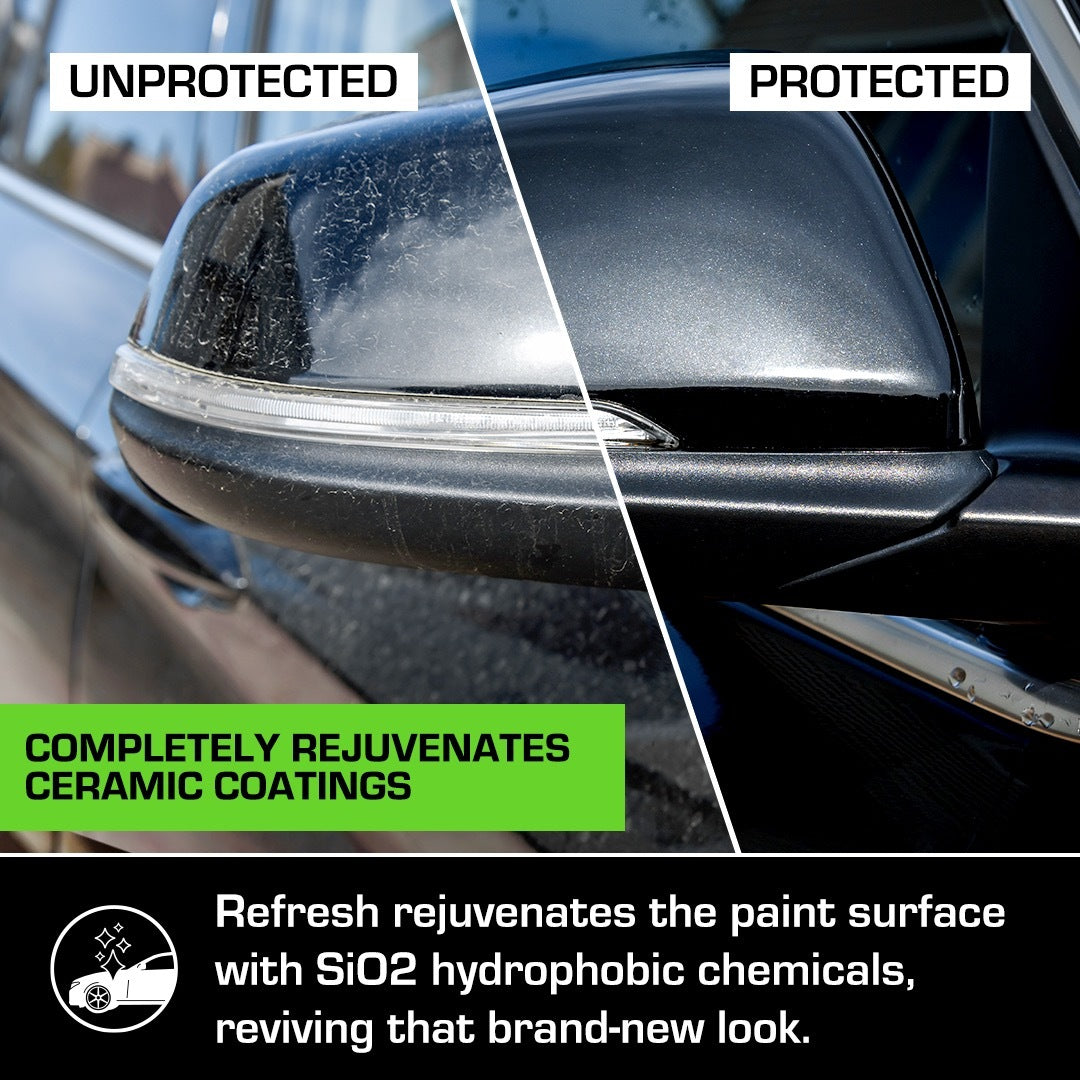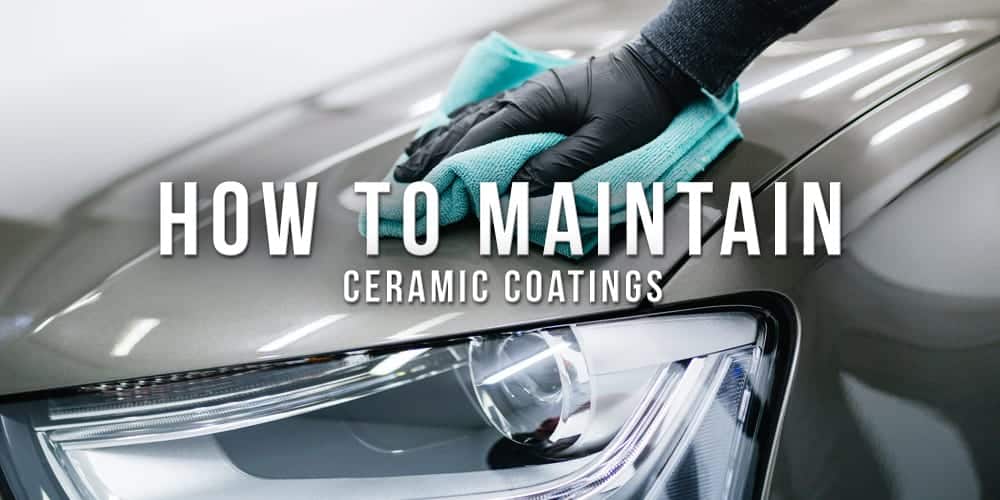Discover the Hydrophobic Magic of Final Touch Auto Works Ceramic Coatings
Discover the Hydrophobic Magic of Final Touch Auto Works Ceramic Coatings
Blog Article
The Ultimate Guide to Ceramic Coatings: Enhancing Your Cars and truck's Finish and Longevity
Ceramic finishes may be the remedy you have actually been browsing for if you're looking to raise your automobile's appearance and protection. These innovative layers bond with your lorry's paint, developing a long lasting barrier against ecological damages. Exactly how do they stack up against traditional wax? Comprehending the benefits and application process can make a significant difference in your cars and truck treatment routine. Allow's discover what makes ceramic coverings a rewarding financial investment for your car.
What Are Ceramic Coatings?
Ceramic layers are innovative protective layers that enhance your vehicle's exterior. They're made from a liquid polymer that chemically bonds with your vehicle's paint, creating a resilient shield. Unlike traditional wax or sealers, which disappear with time, ceramic finishes offer durable security versus environmental impurities like UV rays, dirt, and chemicals.When you use a ceramic finishing, you're investing in an obstacle that fends off water, making it less complicated to cleanse your vehicle and maintaining it looking more recent for longer. This innovation aids protect the honesty of your paint, minimizing the risk of scratches and oxidation.Ceramic layers can be found in different solutions, each designed to deal with various demands and preferences. You can select a do it yourself kit or choose for specialist application, depending on your comfort degree and spending plan. In general, ceramic coatings represent a cutting-edge service for keeping your car's visual allure and longevity.
Advantages of Ceramic Coatings
When you purchase a ceramic covering, you disclose a series of advantages that surpass mere aesthetic appeals. To start with, it offers remarkable defense against environmental pollutants like dirt, bird droppings, and UV rays, keeping your automobile's paint looking brand-new longer. You'll discover that maintenance becomes easier, as the hydrophobic homes cause water and grime to move off easily. This suggests much less time spent washing and describing your vehicle.Additionally, ceramic layers can boost the glossiness of your automobile's surface, giving it that display room luster. They also offer resistance to scrapes and swirl marks, which assists maintain your lorry's resale worth. With a ceramic finish, you're not just securing your investment; you're also enhancing its overall appearance and long life. Inevitably, this sophisticated innovation assurances your vehicle sticks out while enjoying lasting advantages that conventional waxes merely can't match.
The Application Refine: Exactly How to Use Ceramic Coatings
Using a ceramic finishing involves a number of key steps to ensure suitable results. Thoroughly clean your automobile to remove any kind of dirt, grime, or contaminants. This ensures the surface is tidy and ready for the finish. Next, decontaminate the paint utilizing a clay bar to get rid of embedded fragments. Later, check the paint for flaws and brighten it to accomplish a smooth surface.Once your vehicle's surface area is prepped, apply the ceramic layer in little areas. Use an applicator pad to spread out the finish uniformly, adhering to the supplier's instructions. Allow the finishing to treat for the advised time, typically between one to two hours, depending on the product.Finally, avoid cleaning your cars and truck for a minimum of a week to allow the coating bond correctly. Complying with these steps will help you achieve a resilient, high-gloss surface that secures your cars and truck for several years ahead.

Contrasting Ceramic Coatings to Typical Wax
After ensuring your vehicle's surface is completely prepped with a ceramic covering, it's time to contemplate just how this contemporary solution piles up against typical wax. Ceramic finishes offer a durable layer of security that lasts for years, while wax normally provides just a couple of weeks of sparkle. You'll observe that ceramic coverings bond with your paint, developing a hydrophobic surface that repels water and dust, making maintenance easier.In comparison, standard wax sits on top of the paint and calls for regular reapplication. With ceramic coverings, you get exceptional scratch resistance and UV protection, aiding to avoid fading and oxidation. While the first financial investment for a ceramic layer is higher, the long-lasting advantages commonly surpass the costs. So, if you're looking for longevity and enhanced gloss, ceramic finishes are a smart option over standard wax.
Upkeep Tips for Your Ceramic Coated Vehicle
To keep your ceramic-coated automobile looking immaculate, regular upkeep is necessary. Beginning with a mild clean using a pH-balanced shampoo; avoid extreme cleaning agents that can break down the layer. Use a microfiber wash mitt to avoid scratches and always rinse completely to get rid of any soap residue.After washing, dry your cars and truck with a soft microfiber towel to avoid water spots. Think about using a ceramic upkeep spray every few months to improve the covering's hydrophobic residential or commercial properties and include an extra layer of protection.It's likewise important to stay clear of automatic auto washes with abrasive brushes, as they can damage the layer. Instead, select hand washes or check touchless clean choices. Additionally, frequently examine your lorry for impurities like tree sap or bird droppings and resolve them promptly to avoid etching. Following these tips will certainly aid maintain the shine and durability of your ceramic-coated vehicle for many years to find.
Common Misconceptions Concerning Ceramic Coatings
In spite of the impressive advantages of ceramic finishings, a number of myths can produce confusion for car owners. One usual misunderstanding is that ceramic coatings get rid of the requirement for upkeep. While they do provide enhanced security, routine washing and treatment are still important to maintain that high-gloss finish.Another myth is that these layers are scratch-proof. While they offer a solid layer of protection against minor scratches, they can not stand up to extreme effects or rough materials.Many likewise believe that ceramic finishes will make their autos unsusceptible to all contaminants. In truth, they fend off dust and water but will not prevent issues like bird droppings or tree sap from triggering damage if left unattended.Lastly, some believe that using ceramic finishings is a DIY job anyone can handle, however attaining a flawless application usually requires specialist proficiency to ensure peak results.
Picking the Right Ceramic Finish for Your Car
Exactly how do you pick the ideal ceramic coating for your auto? Beginning by taking into consideration the degree of defense you require. If your vehicle encounters pop over here rough weather or constant trip, choose a premium finishing that offers exceptional resilience and resistance to scratches, UV rays, and chemical stains.Next, believe regarding the application method. Some layers need professional installation, while others are DIY-friendly. If you're experienced, a do it yourself item might conserve you money, but also for the finest outcomes, a professional can ensure correct application.Don' t fail to remember to check the durability of the covering. Some last a couple of years, while others can safeguard for a years or even more. Read testimonies and testimonials to assess customer complete satisfaction. By evaluating these variables, you'll find a ceramic finishing that not just boosts your car's appearance but likewise offers resilient defense.
Regularly Asked Questions
For How Long Do Ceramic Coatings Last generally?
Ceramic layers typically last anywhere from two to five years, depending on factors like application, maintenance, and environmental problems. You'll desire to adhere to correct treatment regimens to optimize their long life and performance.
Can Porcelain Coatings Be Applied Over Paint Scratches?
You can't apply ceramic finishings over paint scratches efficiently. It's best to repair any kind of scrapes first, making sure a smooth surface - Final Touch Auto Works Ceramic Coatings. In this manner, the finishing bonds correctly and offers optimal security for your car's surface
Are Ceramic Coatings Safe for All Cars And Truck Surface areas?
Ceramic layers are usually safe for many cars and truck surface areas, including paint, glass, and wheels. Nevertheless, it is vital to examine specific product guidelines, as some finishings could not appropriate for specific products or coatings.

Will Porcelain Coatings Protect Against UV Damage?

Can I Do Touch-Ups on Ceramic Layered Surface Areas?
You can do touch-ups on ceramic layered surfaces, however it's critical to utilize compatible items. Confirm the area is clean and adhere to appropriate application methods to maintain the finishing's integrity and performance. Unlike traditional wax or sealers, which use off over time, ceramic finishings offer lasting security versus environmental contaminants like UV rays, dust, and chemicals.When you apply a ceramic coating, you're spending in a barrier that fends Go Here off water, making it easier to cleanse your automobile and keeping it looking more recent for longer (Final Touch Auto Works Ceramic Coatings). Afterward, evaluate the paint for flaws and polish it to attain a smooth surface.Once your car's surface area is prepped, apply the ceramic coating in tiny areas. Permit the finish to treat for the suggested time, usually between one to two hours, depending on the product.Finally, avoid washing your automobile for at the very least a week to allow the coating bond properly. Take into consideration using a ceramic maintenance spray every few months to boost the coating's hydrophobic homes and include an extra layer of protection.It's likewise sensible to avoid automatic auto washes with rough brushes, as they can damage the coating. Ceramic finishings are generally risk-free for most cars and truck surfaces, consisting of paint, glass, and wheels
Report this page